September 14th, 2009 · 2 Comments
I had the chance to attend the Feminist Literature tour in which I not only learned about women writers who resided in the Bloomsbury area, but also on how spaces affect who we are and everything that we do. I am intrigued with this notion. Recently I posted a blog on space, specifically focused on sacred/holy spaces, in this blog I will look back and focus on a few others others.
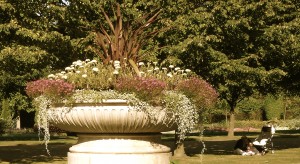
Green Green GREEN
Spaces of recreation, golden flowers and perfectly trimmed grass is what I think of. It is impressive to me how well kept they are. When we visited Regent’s Park during class for the first time, I was at a loss of words, for I had never in my life seen a space so beautiful. William Blake captures this beauty in his poem titled “The Lily:”
The modest Rose puts forth a thorn,
The humble sheep a threat’ning horn:
While the Lily white shall in love delight,
Nor a thorn nor a threat stain her beauty bright.
Regent’s Park could not be touched, human hands could never be gently enough to handle a flower’s delicate body. So untouchable, the flowers arranged almost to perfection. Ralph Waldo Emmerson once said that “Earth laughs in flowers,” and I believe him.
Hyde Park, almost as magical, but words cannot capture the immensity of this park. The amount of green that surrounds you at any given moment is difficult to describe. This park in particular serves as more than just a space for recreation, it is also a place where history is preserved, where various neighborhoods unite and where kids grow up to later bring their own kids to play at Kensington Gardens or near the lake. Green Park, a sort of gateway to Buckingham Palace (if you get off at the Green Park Tube station), can never be compared to Hyde Park for it lacks in immensity. Even though the deck chairs are a nice touch to the park, the area I visited lacked some color (as in floral color); I was not impressed. (Buckingham Palace itself was not very impressive. I was surprise to discover that it actually isn’t an enormous, glorious and royal-looking mansion… I guess it’s a good thing that it isn’t after all!)
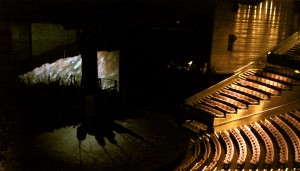
Let’s start the show!!!
Sometimes walking in for the first time takes my breath away, and sometimes the shows blows my mind, other times the idea of sitting there makes me wonder… wow. The three different halls of at the National Theatre, The Globe, Duke of York’s, the Phoenix and last but not least Royal Albert Hall! So here’s the list: “Troilus and Cressida,” “Arcadia,” “All’s Well That Ends Well,” “As You Like It,” “Pitmen Painters” and the not-so awesome musical “Blood Brothers,” oh and the amazing violin concerto at the Royal Albert. In London, I am never too far from New York City’s Broadway experience! The difference, the London experience always feels fulfilling no matter how horrible the play was. This is probably because Broadway shows are not exactly affordable, and while the National Theatre insists on having a wide range of prices (so that everyone can enjoy the theatre), Broadway just seeks revenue and to maintain it’s current status and popularity. I mean, to have Rick Fisher (who by the way is a Dickinson alum), winner of of a Tonny award, come to speak to us about his thoughts and experiences with London’s theatre scene, that within itself was enough to top all of the Broadway shows I have seen in my life! I <3 the London theatre experience!
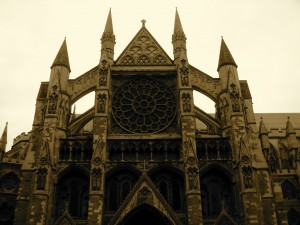
Religious spaces.
Intricate architecture, imagination, creativity and grace is what comes to mind when I think of churches. I’ve written a blog about them but I wanted to look back at a few of them. Westminster, ridiculously sacred, marvelous, immense and glorious. The same can be said about St. Paul’s Cathedral and the Hindu Temple we visited. At Brixton (where I directed a tour along with my teammates), I learned that religious spaces play a huge role in the community, one that extends beyond any religious affiliations. One specific church we visited during our research, Corpus Christi Roman Catholic church was involved in the reconstruction of the Brixton area after the Brixton riots, when parts of the neighborhood where damaged/destroyed due to violent protests. It always brings joy to my heart when people come together to help each other, regardless of any religious/cultural boundaries.

Clubs NOT Pubs
Ooooh pubs…. I’ve heard that you can see London’s history evolve in these spaces, and although they are known as spaces of leisure and social interaction their walls can tell unknown stories of both know and unknown visitors. I am always intrigued by pubs, so intrigued I am intimidated by them. I now that sounds a little ridiculous but in pubs I feel pressured to consume alcohol (after all that is the main purpose of a pub: to provide alcoholic beverages) and to maintain conversation when really all I want to do is dance to the awesome music playing in the background. Rebbeca (who along with 4 others constructed a tour of London’s historic pubs) has attempted to both enlighten me as well as persuade me to engage in pub culture, but I have yet to fully explore the wonderful world of London’s historic pubs.
Clubs, on the other hand, I’ve also had a difficult time with. I’ve realized that there isn’t much dancing that goes on, but rather an attempt to dance, which actually means jumping around to Lady Gaga’s “Just Dance” (pop/techno song). Over all, I have enjoyed late hip hop nights at Metra (dance club a few street corners off the Leichester Square tube stop) only because I have shared that space with amazing people who can turn any floor into a dance floor. (Thanks Anthony, Jeyla and Patsy!)
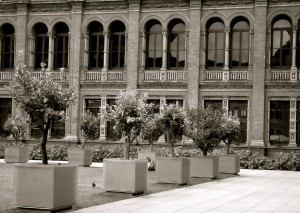
Spaces, our everyday living takes place within them, whether they are churches, clubs, parks or theaters. We lack to realize their importance, we never stop to think of how a room may affect how we feel about ourselves and about the rest of society. A room can change our lives, like the reading room at the British Museum that the feminist writers group spoke of on their tour. This room clearly changed Virginia’s Wolf literature, among other authors, I’m sure.
Note to self: Whether this room is physical or mental, it is important. We must take more time to appreciate a rooms ability to change the way we exist in our own individual worlds.
The End.
Tags: Flow · Uncategorized
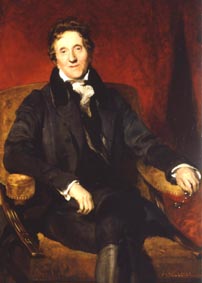
Sir John Soane, R.A.
Yesterday afternoon we decided to walk to the Sir John Soane Museum rather than taking the tube. It was only a few blocks past the British Museum and I was able to see more of the Bloomsbury neighborhood. When we arrived at Lincoln’s Inn Fields, it was easy to spot. First of all, there was a queue of people outside the gates and second, who else would have caryatids on the façade of their house but a classics-loving architect? While I appreciated the concept of the museum, (Sir John wanted to leave his home as a showcase for his antiquities and works of art) I thought it was SO crowded with his artifacts that I could barely focus on the actual architecture of the house. It was like walking into an “Antiques Roadshow” dream house. Ironically, my two favorite rooms were the ones that contained the least amount of classical antiquities, the library and the upstairs sitting room. I loved looking through his books and his paintings (the Turner on the second floor is exquisite!) because I felt that was a better way to try and gage what kind of man Sir John was. You can tell a lot about a person by what he/she reads. I loved the yellow sitting room because it was whimsical and light in the midst of all the dark wood and ancient Greek artifacts. The stained glass and the bright saffron-colored walls provided a nice contrast against the rest of the museum/house. I imagine that Sir John’s wife had a hand in decorating this area (although I can’t be sure) and he left it this way after she passed away. I only wish that there had been some sort of guide that I could have used to navigate through the house or a curator I could have talked to. Obviously, Sir John loved classical sculpture and architecture, and his collection is truly impressive, but I would have liked to see more of the floor plan. Also, I wonder what Soane’s sons could have done to persuade him to even turn the home into a museum. On the homepage all it says is he was “deeply disappointed by the conduct of his two sons.” Any thoughts on that? I really enjoy exploring the places where people lived. It’s fascinating to me… What were they like? What was their daily schedule? What room did they spend the most time in? To any future visitors, make sure you venture down into the basement aka “the crypt” to check out the sarcophagus of Pharaoh Seti I. This is definitely a non-conventional museum. To be perfectly honest, what it lacked in curatorial flair, it made up for in dedication to preservation. The Sir John Soane museum was a welcome change from the halls of slick marble and crowds of tourists that have been a staple of the larger institutions. Sometimes it’s the places off the beaten track that make the biggest impression. While this museum was not my favorite attraction of London, It does showcase the importance of exploring the smaller, less popular areas. Next stop—Chancery Lane!
Tags: Grace · Museums · Uncategorized
September 1st, 2009 · 8 Comments
If there is one thing that immediately places you in the mindset of a new country, it’s the food you eat there. From your last meal at home to the first meal abroad (and beyond), food plays an unavoidably large role in how you understand and view your new home (I mean, you’re bound to get hungry at some point). Do not let the title of this post deceive you–I promise not to make this a justification for gluttonous behavior. I plan to explore some of the British dining etiquette I have come to understand after only several days of making observations. It’s something that I find interesting and, more often than not, it’s one of the things that stands out about unfamiliar places such as London
Americans are often criticized about their appetites. Films have been produced and books have been written about the subject, and they will continue to hit the shelves as long dieticians and the media keep it at the forefront of society’s attention. I am not a critic for this recent movement, nor am I against moderation with regard to food. Alas, I think I am digressing; this is a whole different debate to have at another time.
I mention American diets because it certainly has a significant presence in what I see, hear, and do every day. Before coming to London, I suspected things would be very similar in some ways and the complete opposite in others. In my self-conceived notion of London, food ads would show fruit stands – not necessarily McDonald’s. Restaurants would have over-the-top service to accommodate their customers – similar to some/most restaurants in the US. People would make eating a priority in London – e.g. causing a widespread shutdown of business during “tea time” (not unlike a siesta of sorts). These are the things that I predicted. Some were correct. Many were completely wrong.
The British, as I observed walking around in Heathrow once our plane landed, have no different impressions of food than Americans do. The airport is lined with various fast food places, for instance. It took several days later when my initial assumptions would prove incorrect. It was my second or third experience in a London restaurant that gave the British away immediately as defining “food service” on completely different terms.
After taking our seats in the busy restaurant, we sat down to look at our menu. Our waitress asked us what we wanted to order only five minutes after sitting down. She did not oblige our requests for more time – she stood explaining that we had to order our food now, and then we could sit in the restaurant for as long as we wanted. I didn’t want to dismiss her as rude or not friendly. I mean, after all, she did not give us her name, ask us how we were doing, or show any sign of interest in serving us. I did not know this girl too well, so who was I to pass judgement?
This threw me off, but do not get me wrong – I have no hard feelings against the restaurant or its employees. I will admit, however, that a food server would not rush a table of people in the US. You would run the risk of inciting riots, food fights, and a big decline in tip (I should note here that we did tip the server. Generously, if I might add.). This is all part of the experience, I tell myself.
Food has different meaning on the city streets/pavements as well. Often, restaurants or sandwich stands have seating outside. No one walking by on any pavement has food in their hand – no sandwiches, no drinks (except some coffee cups), and no bags of food. It’s because no one eats while walking. In America, people sample their meals (or eat the whole meal) in a sprint to the workplace. There are even American food companies that make this run-by eating, “food-on-the-go” easy (microwavable soup containers, perhaps?). They have no problem eating in the car. The British, thus far, appear starkly different, as far as I can tell. Food should not be rushed nor on-the-go; if you are seen eating on the run, you get strange looks (I have received these looks since arriving here). Even settling down on the curb with some lunch will attract stares. To give you a sense of some table manners, look through an article in the London Evening Standard. It is not comprehensive, but it gives you some sense of how eating your sandwich while rushing to the Tube can seem confusing and downright frustrating to onlookers.
I did try to stay away from “American” cuisine. I quickened my pace past Subway and Pizza Hut and Starbucks. I told myself I would never eat at these places. And yet I gave in to my first British Frappucino at Starbucks the other day. Why would I go against my goal? The answer is simple (to an extent) – food can be a comfort to many people, myself included. Eating something that reminds you of home should not make you feel guilty. I have had my share of fish and chips and other foods, but the occasional dip into American food should not raise any alarms. Or that’s how I see it, anyhow.
This post does connect to our study of what defines London and its various inhabitants, who place themselves in very different regions of the city. In Stepney Green you will find very few, if any, pubs. You can, however, order Thai, Middle Eastern, or Turkish food on just about every block. In Bloomsbury, you can find a multitude of pubs within a ten-minute walk of entering the area. You would be hard-pressed to find as many Thai or other ethnic food available in the area.
What does this mean? Does this reinforce the notion that London is defined by its very separate ethnic groups? Perhaps this strengthens arguments made that London is not a unified city and should not be deemed so. This does have some bearing on the issue, for food represents part of culture and, in turn, what defines certain peoples of London. Can someone from Stepney Green feel comfortable in Bloomsbury, what with the more prominent pub culture (and vice versa)?
The subject of food is easy to observe, but it has some deeper issues you must analyze in order to gain a more comprehensive understanding of its role in a culture. Has anyone experienced boundaries set by food or food services? For example, think about the food available at this weekend’s Carnival – how does this tie into London and how Londoners define themselves in the larger region?
Tags: Brandon
And what a gap we’ve had to climb across. I’ve tried to compare the city of London to Philadelphia (near my hometown) with limited success. Certainly, there are in both cities museums, rich histories, congested traffic, great restaurants, distinct cultures, and hidden sights known only to the most astute tourist. Once I consider London’s inherent variety – cultural, architectural, personal, etc. – my comparison falls short. Nay, even dismantled entirely. Every venture into the surrounding city reminds me that I may never realize just how much variety comprises the massive city of millions of people.
Our walk through what was Roman London (Londinium) on Sunday gave me some solid evidence of the historical variety of London. Over the last 2000 years since the Romans invaded and settled in the region, London has changed leadership as various civilizations came to the dominate the area in turn. Even within it’s own boundaries, London has shifted from The Canterbury Tales to the development of green spaces to the bowler hat and, despite continued debate, the recent introduction of immigrants from around the world. London has not stood still since dropping the name Londinium and, given recent readings (See A.N. Wilson’s London: A History), I doubt it ever will.
Bloomsbury surrounds our hotel with parks, pubs, celebrated figures, and some of the most beautiful areas of London I have seen thus far. Sure, I’m still in the phase in which every part of this city (even the “rubbish” bins) fascinates me to no end. But these parks are just incredible. We passed through about a half-dozen through our walk. I’m sorry Rittenhouse Square, but as beautiful as you are, Tavistock Square may be your new rival.

Consider, too, the variety contained within London’s museums. I, not unlike some of my classmates below, enjoyed the Museum of London Docklands as providing a very different, localized perspective on the history of the city. The curators handled the controversial and well-debated enslavement of Africans during the 17th through 19th centuries with grace and decisiveness. This is important, as the subject never really left the forefront of academic research to this day. Just as Sarah noted in her post “London, Sugar & Slavery at the Docklands Museum,” the museum approached it’s survey of the slave trade without provocation. Even the aesthetics of the building gave support to this ideal. The ceiling structure of the museum offered some quiet reminiscence to the original use of the site – a warehouse used to hold rum, molasses, coffee, and other goods from the West India slave plantations. While I certainly found this exhibit moving and among the best I’ve seen, I do not want to repeat the thoughts already shared by my classmates, for I hold many of the same impressions (please see many of the posts below to get a better idea!).
I will comment on the final exhibit of the museum that covered the modern history of the Docklands from the Blitz to the Beatles to Container City. The twentieth century, just as any century in London, has brought an onslaught of change and variety to the city. The Luftwaffe attacks in 1940 brought solidarity, though sometimes brought on by propaganda. The Underground renovations brought a renewed transport system to an increasingly crowded city. Though immigration was not discussed to any great length in the exhibit, we know that this was the time of an increased Afro-Caribbean presence. Nevertheless, it was an incredible, aesthetically pleasing, and largely informative exhibit.
London has never remained put. I see it in the museums and the other areas I’ve visited in the last few days. The variety is simply inconceivable. At the very least, this guarantees me a new experience every time I venture out into the city. I mean, what more could I ask for?
Tags: Brandon

Yesterday, among the jam-packed day of activities (Passing the Tower of London and following the Roman wall, seeing the Museum of London, and visiting St. Paul’s), I went on a Qualls-guided-tour of the Bloomsbury district. For those of you who don’t know what the Bloomsbury Group is, they were about the hippest, coolest, people in the 20th century. They were artists and writers who threw elaborate cool parties and talked about politics and sometimes even swapped partners (homosexuality was still illegal in England at this time)!

Bloomsbury Plaque
How do I know all this, you ask? Well it’s because I know everything! Actually, I spent my second semester of last year pretty much completely immersed in a course called, Forester’s England, taught by Professor Wendy Moffat. While writer E. M. Forster himself was not a member of the Bloomsbury group, it was through this class that I learned so much about the group, its members, and their importance to the time period and England’s history. With all this in mind, it was probably one of the most exciting things I will do during this London course, to stand where these great, free spirited, free thinking people stood. Knowing all that was on the lone, these artists and writers strove to change the society before them. Being able to see where that was happening was truly amazing.

Virginia Woolf Bust
After our class discussion this morning about English people’s connection to their country’s history, and their “English Pride,” it is even more exciting to think about the Bloomsbury group and just how revolutionary their ideas and way of life were. Even the idea of political change is not something most everyday English people think of, let alone act on! As an artist myself, I know the power of the creative arts as motivation for political change and activism.
Standing where Virginia Woolf once stood, where John Maynard Keynes once discussed his economic theories, where Vanessa Bell once must have visited her sister and painted, I only hope that someday my creative efforts can achieve as much as theirs did.
Below is a slide show of photos from my full day, including the Bloomsbury tour, St. Paul’s, and the Museum of London.
Tags: Megan









